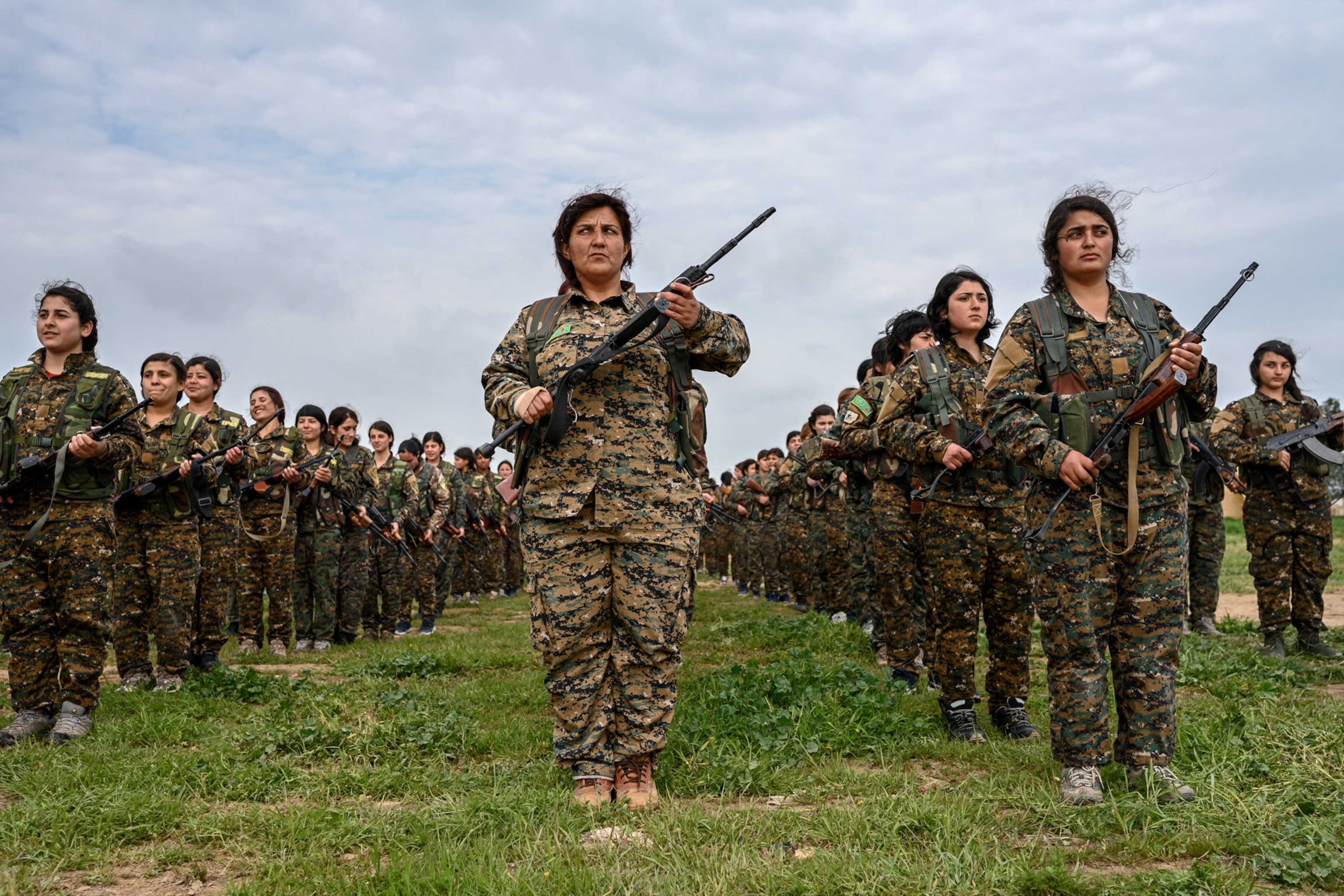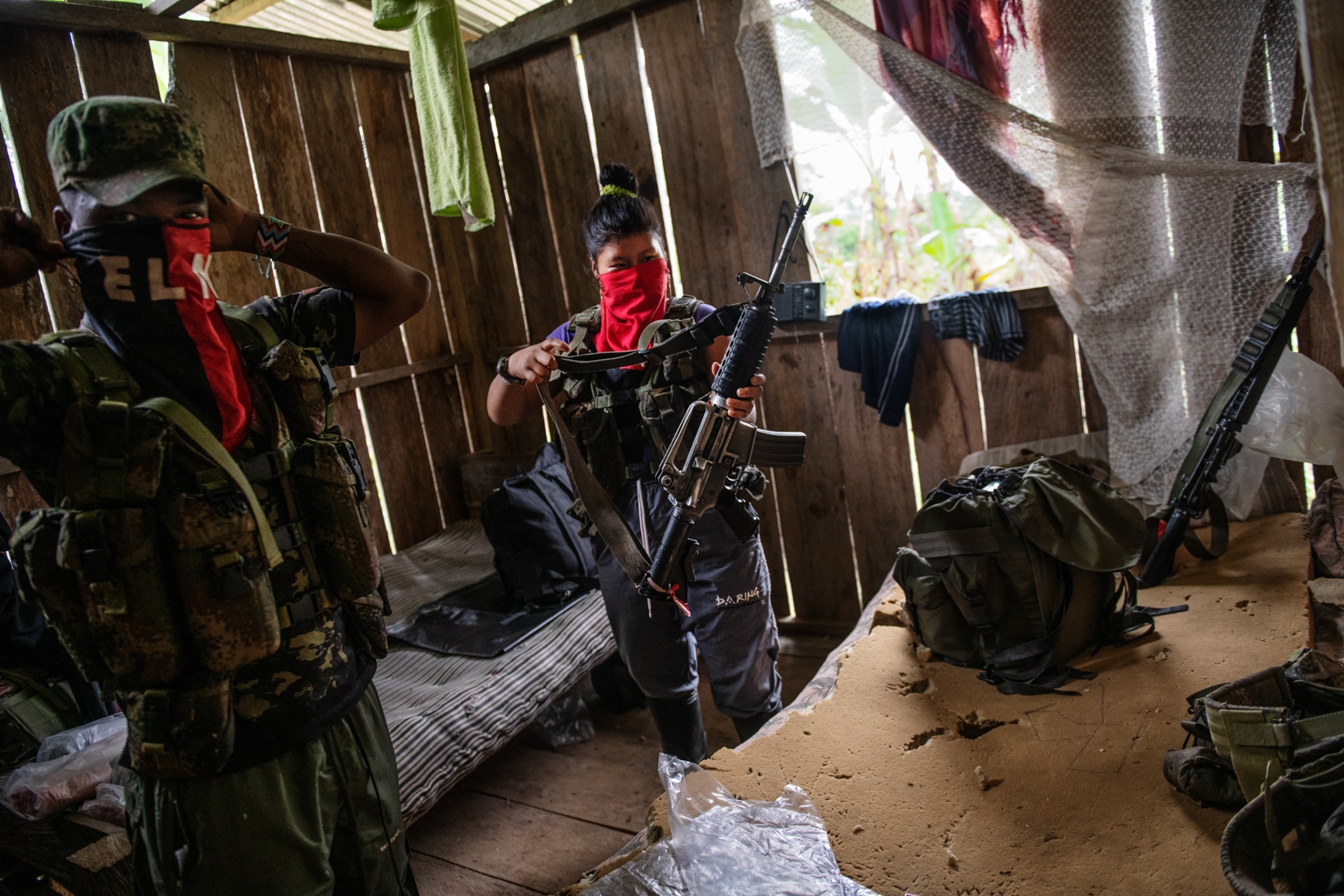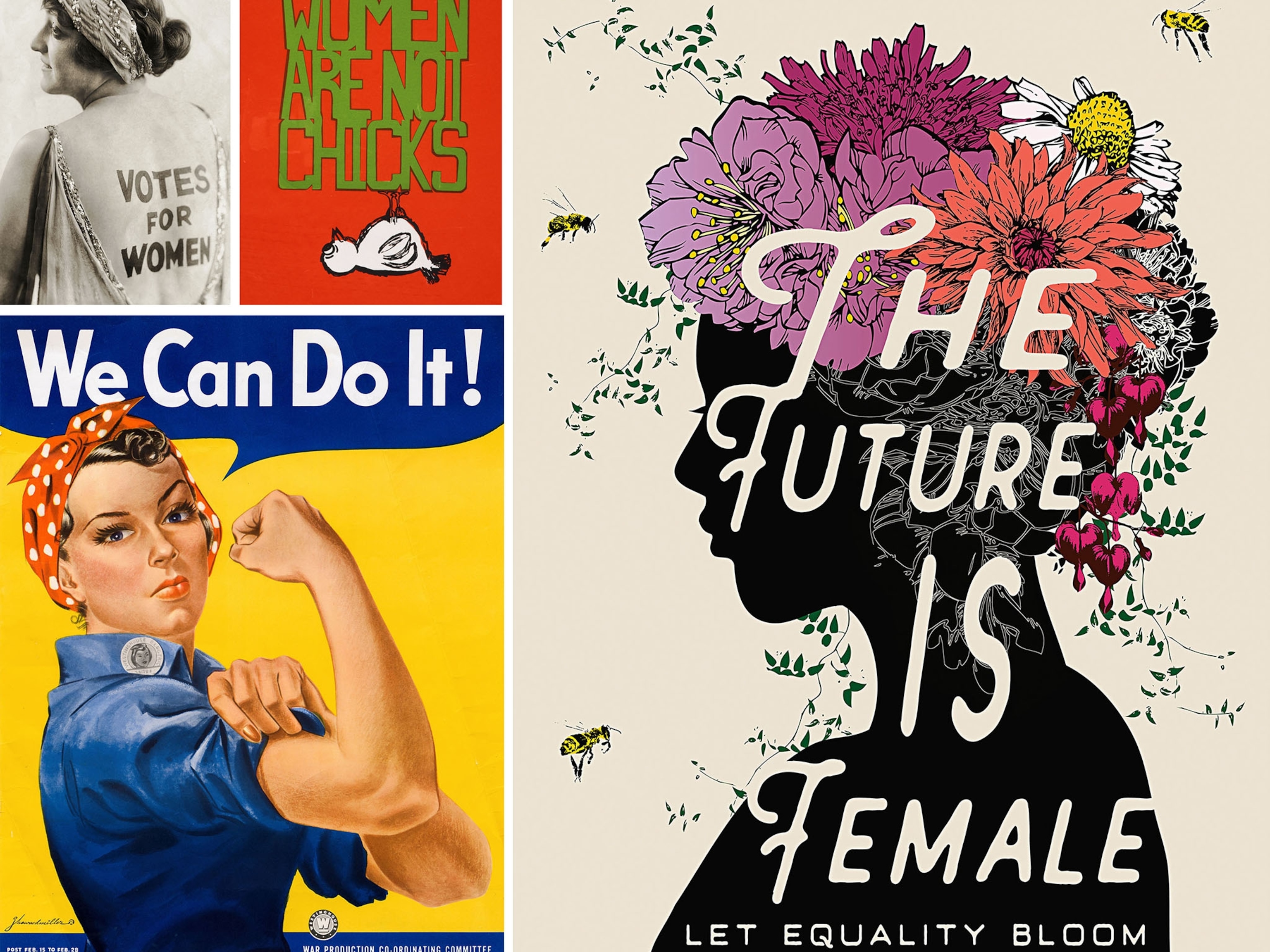
On today's battlefields, more women than ever are in the fight
Females are taking more active roles in militaries, serving on the front lines of armed conflicts and as peacekeepers in the world‘s hot spots.
In a desert town in east-central Syria, two prisoners sat on the ground, guarded by about a dozen Kurdish men. The two had surrendered to the mostly Kurdish defense force, YPG, as it routed ISIS fighters from Baghouz, their last stronghold in Syria. The prisoners awaited transport to a detention camp that already held tens of thousands of ISIS loyalists and dependents. The guards stood over them, their triumph palpable.
A few hundred feet away, female Kurdish fighters with AK-47s over their shoulders guarded women and children, presumably militants’ wives and offspring. As these fighters, known as YPJ, chatted, several took long drags on their cigarettes (it had been forbidden for women to smoke under ISIS). Others adjusted their hair using their cell phones as mirrors (under ISIS, a woman who hadn’t kept her hair and face covered would have been whipped). Occasionally a YPJ woman spoke to the veiled women, a sea of black cloth punctuated by wary eyes and filthy children.
As the morning dragged on, some YPJ fighters decided to see the enemy up close. The women approached the two prisoners almost casually at first. Then, slowly and deliberately, they walked a tight circle around the men, staring straight at them. Not long ago in this town, a woman could have been executed for such behavior. But ISIS had fallen, and the female defenders of Kurdish Syria were claiming equal footing with their male comrades. They were on the front lines together, savoring victory.
From the desert of Syria and the grasslands of South Sudan to the war-torn jungle in western Colombia, growing numbers of women are serving on the front lines of military conflicts. Their uniforms and circumstances differ, but they cite similar reasons for joining armed forces. They want to serve their country. They want to show confidence, competence, and strength, setting an example for their children while proving something to themselves. Some mention a larger purpose that their male counterparts do not: They want to make life better specifically for women and girls—in their country, the region, and the world.
Syria
For nearly a decade, the Syrian Kurdish resistance has made a point of including women among its fighters. An all-women unit, the YPJ claims more than 20,000 members; many are Muslims who reject interpretations of Islam that they see as oppressive. “We are volunteers,” a commander says. “We don’t let any others attack our cities and kill our brothers and sisters. Our families say, as women of course you can join.”

independence warriors




At least 16 industrialized nations permit women to serve in frontline or combat roles. Women have served as an official part of the U.S. military in noncombat—but nonetheless dangerous—roles since Congress established the Army Nurse Corps in 1901. In addition to working as nurses, they were radio operators and logistical staff and, more recently, helicopter pilots and tank mechanics.
Even when policy allows women in combat roles, commanders may blanch at sending them. But in this era of terrorist attacks and ethnic clashes, women serving anywhere “can find themselves in combat, because the battlefield is nonlinear,” says Marine Lt. Col. Misty Posey, commander of female marine recruits at Parris Island, South Carolina, for two years, until mid-2019. “If you’re admin, if you’re supply, you could be in combat. And they all know that.”
Women recruits, familiar with society’s stereotype of “the weaker sex,” often arrive doubting whether they’re equal to the task. Posey won’t hear of it: “Women learn weakness. We can also unlearn it.” By the end of training, Posey says, most female marines are confident in their abilities “and know that they’re just as capable of contributing” as men.
Josephine Muhawenimana, a Rwandan mother of two, became a police officer because she admires “the way they are strong and ... inspire others.” Now she’s a chief sergeant in a UN peacekeeping force in South Sudan, a nation bloodied by civil and ethnic conflicts. “I remember what happened,” Muhawenimana says of the 1994 Rwandan genocide she escaped; she hopes peacekeepers can help prevent such a bloodbath in South Sudan. That country’s women seem proud of the job she’s doing, she says; mothers have thanked her for showing their daughters an alternative to getting married when they’re barely past puberty.
In Colombia a fighter known as Comandante Yesenia has spent two decades with the ELN, a left-wing guerrilla group fighting the nation’s government. She gave birth to a daughter in the forest and carried the nursing baby along with her for months. Yesenia says she’s fighting for equality for poor people, indigenous people, and women. “Every person brings her grain of salt,” she says. “From different spaces, we all fight.”
In the Syrian desert, as the captured ISIS fighters wait to be taken to detention camp, a YPJ fighter named Nuda Zagros is imagining the future. “Wherever there is oppression against women, we would like to go there,” she says. “We want to fight for equality. We don’t want to be superior, and we don’t want to have superiors. We are all the same.”
United states
Women have been able to serve in aviation and naval combat since the early 1990s, a period that also saw deep cuts in personnel as the Cold War ended. Only in 2016 were all ground combat jobs opened to women; by August 2019, 2,906 women held once restricted Army ground combat jobs.

Rising up the Ranks




Colombia
Despite efforts to end decades of guerrilla conflict in Colombia, secret mobile camps are still home to the country’s National Liberation Front (ELN), which has rejected ceasefires brokered with other groups. Labeled terrorists and extortionists by government officials and other Colombians, ELN members call themselves fighters for justice. “My dream for this country,” said a fighter who calls herself Comandante Yesenia, “is social equality—and gender equality. I can feel the machismo even within this organization.”

refusing to yield




South Sudan
Of the 19,500 United Nations peacekeepers helping protect civilians in the conflict-roiled new nation of South Sudan, about 1,600 are women, from many countries. The women’s presence is part of a newly intensified effort to bring more gender balance to forces the UN deploys internationally. “This is not just a question of numbers but also of our effectiveness,” UN Secretary-General António Guterres told Security Council members recently. Adding more women peacekeepers, he said, truly does seem to help keep the peace.

Armed Guardians




Israel
Israel is one of fewer than a dozen countries (the list includes North Korea and Norway) that draft both women and men into military service. Women have been active in national defense since the 1948 founding of modern Israel; exemptions are offered for reasons like motherhood or religious conviction, but otherwise, two years’ service is expected, a little less than the time required for men. Controversy continues about the extent of gender mixing in the Israeli services and which roles women can fill. Patrolling borders, for example: Yes. Driving tanks: No.

drafted defenders





Go Further
Animals
- Orangutan seen using plants to heal wound for first timeOrangutan seen using plants to heal wound for first time
- What La Palma's 'lava tubes' tell us about life on other planetsWhat La Palma's 'lava tubes' tell us about life on other planets
- This fungus turns cicadas into zombies who procreate—then dieThis fungus turns cicadas into zombies who procreate—then die
- How can we protect grizzlies from their biggest threat—trains?How can we protect grizzlies from their biggest threat—trains?
- This ‘saber-toothed’ salmon wasn’t quite what we thoughtThis ‘saber-toothed’ salmon wasn’t quite what we thought
Environment
- What La Palma's 'lava tubes' tell us about life on other planetsWhat La Palma's 'lava tubes' tell us about life on other planets
- How fungi form ‘fairy rings’ and inspire superstitionsHow fungi form ‘fairy rings’ and inspire superstitions
- Your favorite foods may not taste the same in the future. Here's why.Your favorite foods may not taste the same in the future. Here's why.
- Are the Great Lakes the key to solving America’s emissions conundrum?Are the Great Lakes the key to solving America’s emissions conundrum?
- The world’s historic sites face climate change. Can Petra lead the way?The world’s historic sites face climate change. Can Petra lead the way?
History & Culture
- Meet the ruthless king who unified the Kingdom of Hawai'iMeet the ruthless king who unified the Kingdom of Hawai'i
- Hawaii's Lei Day is about so much more than flowersHawaii's Lei Day is about so much more than flowers
- When treasure hunters find artifacts, who gets to keep them?When treasure hunters find artifacts, who gets to keep them?
Science
- Why ovaries are so crucial to women’s health and longevityWhy ovaries are so crucial to women’s health and longevity
- Orangutan seen using plants to heal wound for first timeOrangutan seen using plants to heal wound for first time
- Should you be concerned about bird flu in your milk?Should you be concerned about bird flu in your milk?
Travel
- 5 of Uganda’s most magnificent national parks
- Paid Content
5 of Uganda’s most magnificent national parks - On this Croatian peninsula, traditions are securing locals' futuresOn this Croatian peninsula, traditions are securing locals' futures
- Are Italy's 'problem bears' a danger to travellers?Are Italy's 'problem bears' a danger to travellers?
- How to navigate Nantes’ arts and culture scene
- Paid Content
How to navigate Nantes’ arts and culture scene




